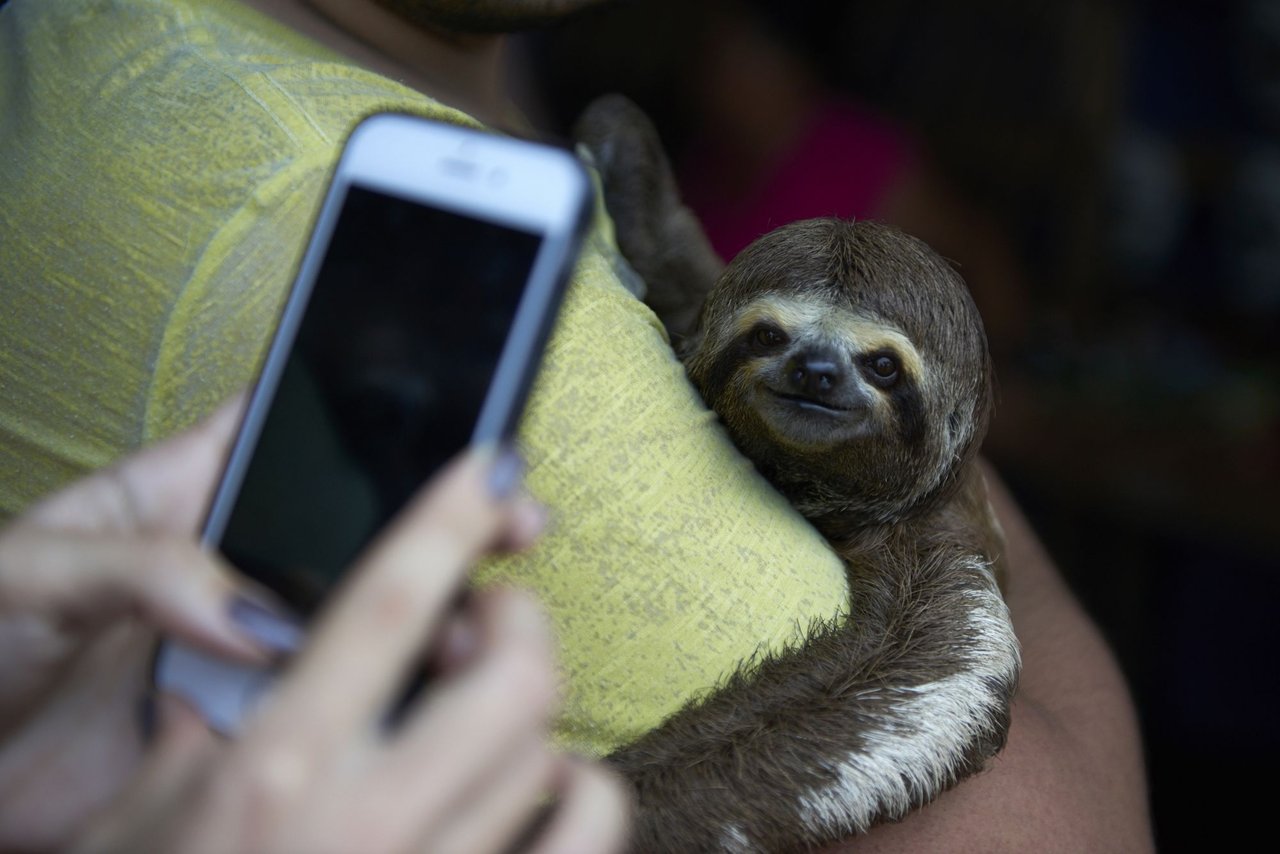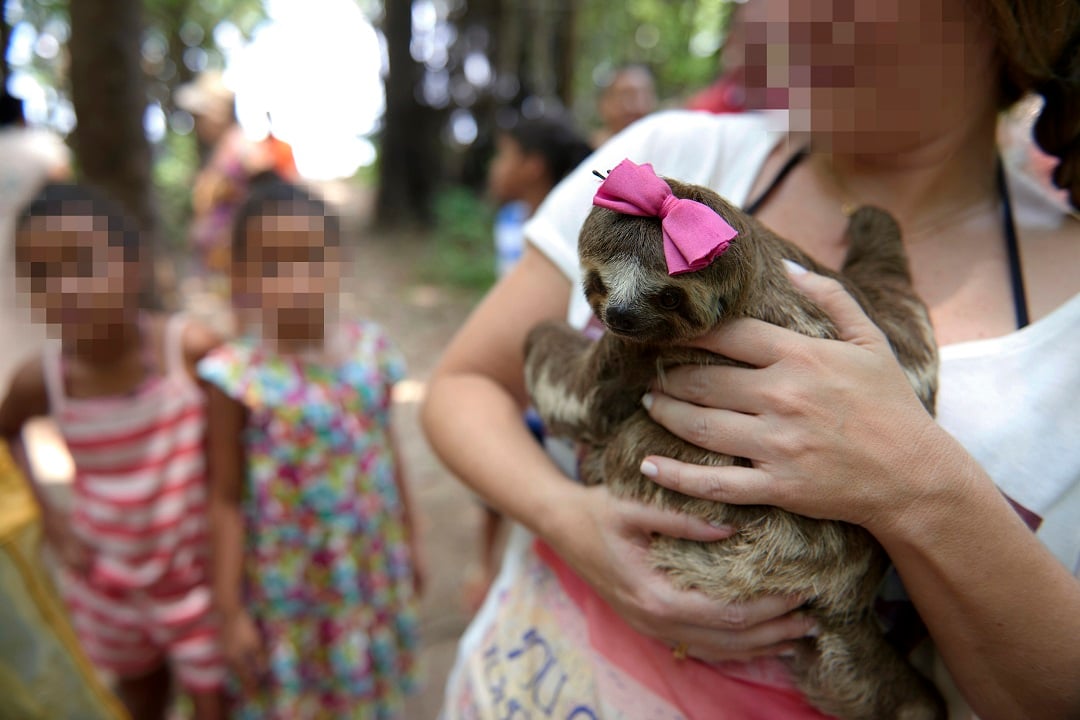
#SlothSelfies
Do you know what happens behind the scenes?

Sloths in the spotlight
Sloths have shot into the spotlight, featuring in memes, movies and more. With their perceived huggability, amazing facial expressions, and adorable demeanor it’s hardly a surprise.
As a sloth-lover, embracing a sloth for a photo might sound like a dream come true. Keep in mind though, while it’s a once in a lifetime opportunity for you, it’s a lifetime of suffering for the sloths involved.
Don’t be a part of this ugly picture
Each year, hundreds of sloths are taken from the wild to be used as photo props for tourists.
Brown-throated three-toed sloths are most commonly used for tourist selfies. Their quiet, docile nature makes it easier for people to take them from the wild and use them for tourist entertainment. These wild animals are passed from person to person for endless hours of photo-taking. Because of their facial structure, they appear to be smiling even when they are experiencing pain, stress or anxiety.

Will you help to protect sloths?
Pledge not to take part in #SlothSelfies and spread the word.
Yes, I will protect themStill Want To Take A #SlothSelfie?
- Let sleeping sloths lie: Sloth sleeping patterns depend on their habitat. Sloths in captivity sleep up to 15-20 hours a day while sloths in the wild sleep about as much as we do. When sloths are used for photos, they sleep less because they are vigilant and constantly fearful of their surroundings.
- The original tree-huggers: Sloths are arboreal, which means their natural habitat consists of trees and branches. When not being handled by tourists, sloths used in tourism have been observed to be left on the floor or tied up. This is very stressful to sloths and leaves them feeling vulnerable.
- Slinging sloths: Many smiling tourists have never held a sloth before. In fact, many sloths are poorly handled by both guides and tourists alike. Research shows that sloths are frequently held by their claws or arms with no support at all which causes high levels of fear and stress.
- A sloth’s life: The stress of being used as a prop compounded with poor care shortens the lifespan of sloths dramatically. In the wild, they can live 20-30 years. Sloths used as picture props die within a few weeks or months of being poached. Because of demand, this only leads to more sloths being poached from the wild to replace them.